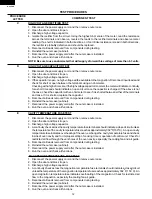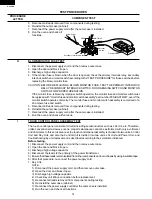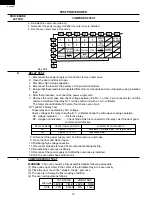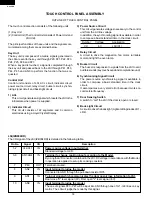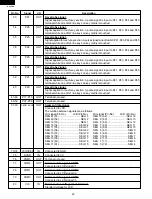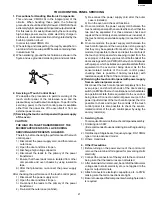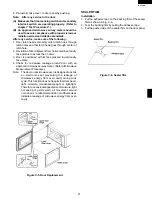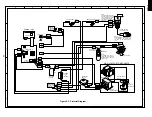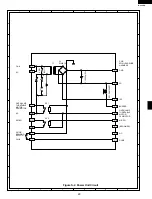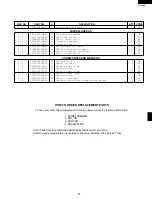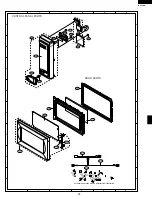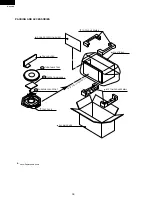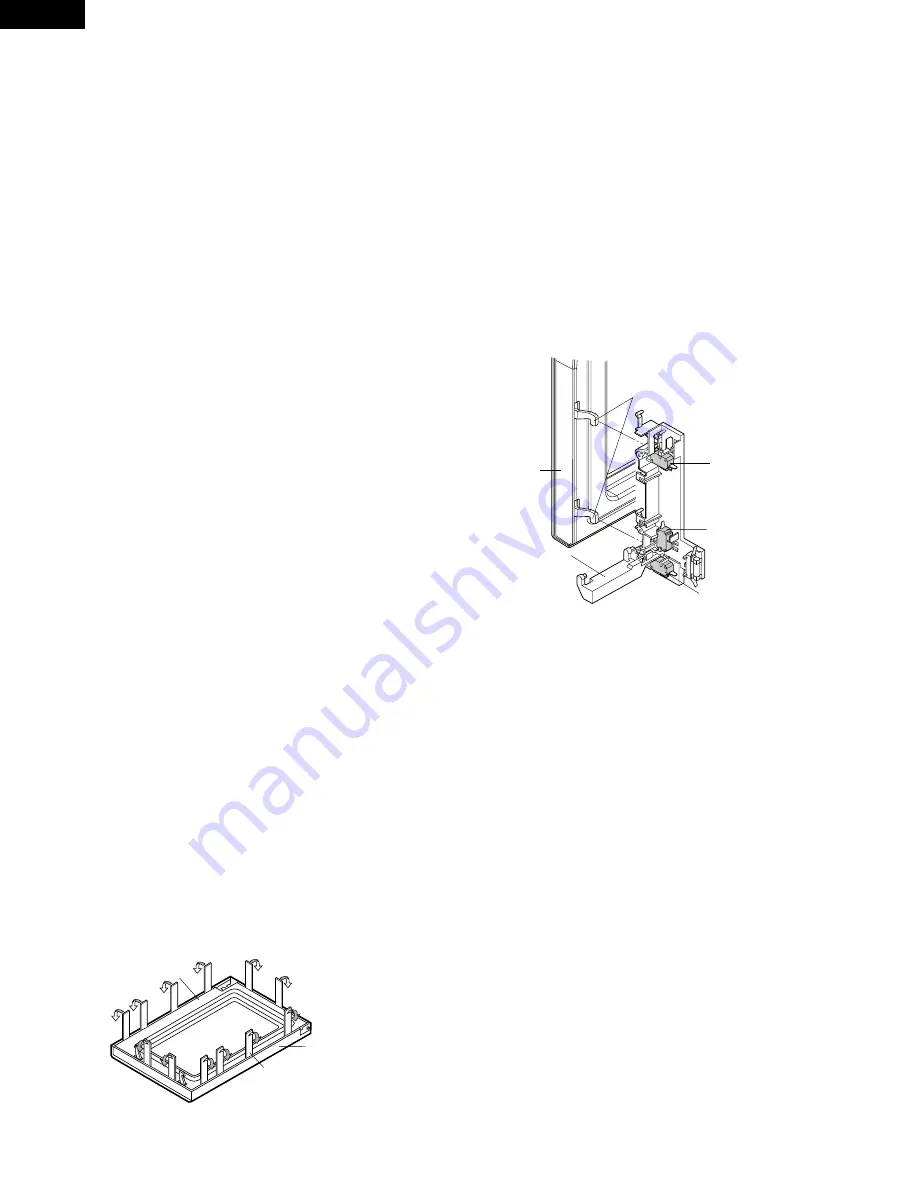
26
R - 4 0 5 D K
3. Secure latch hook (with two (2) mounting screws) to oven
flange.
4. Make sure that the monitor switch is operating properly
and check continuity of the monitor circuit. Refer to chapter
"Test Procedure" and Adjustment procedure.
DOOR SENSING SWITCH/SECONDARY INTERLOCK SWITCH AND MONITOR SWITCH ADJUSTMENT
1. Disconnect the power supply cord, and then remove
outer case.
2. Open the door and block it open.
3. Discharge high voltage capacitor.
If the door sensing switch, secondary interlock switch and
monitor switch do not operate properly due to a
misadjustment, the following adjustment should be made.
4. Loosen the two (2) screws holding latch hook to the oven
cavity front flange.
5. With door closed, adjust latch hook by moving it back and
forth, and up and down. In and out play of the door
allowed by the upper and lower position of the latch hook
should be less than 0.5mm. The vertical position of the
latch hook should be adjusted so that the door sensing
switch and secondary interlock switch are activated with
the door closed. The horizontal position of the latch hook
should be adjusted so that the plunger of the monitor
switch is pressed with the door closed.
6. Secure the screws with washers firmly.
7. Check the operation of all switches. If each switch has not
activated with the door closed, loosen screw and adjust
the latch hook position.
After adjustment, check the following.
1. In and out play of door remains less than 0.5mm when in
the latched position. First check upper position of latch
hook, pushing and pulling upper portion of door toward
the oven face. Then check lower portion of the latch
Figure C-3. Latch Switch Adjustments
hook, pushing and pulling upper portion of door toward
the oven face. Both results (play in the door) should be
less than 0.5mm.
2. The door sensing switch and secondary interlock switch
interrupt the circuit before the door can be opened.
3. Monitor switch contacts close when door is opened.
4. Re-install outer case and check for microwave leakage
around door with an approved microwave survey meter.
(Refer to Microwave Measurement Procedure.)
DOOR REPLACEMENT
REMOVAL
1. Disconnect the power supply cord.
2. Push the open button and open the door slightly.
3. Insert a putty knife (thickness of about 0.5mm) into the
gap between the choke cover and door frame as shown
in Figure C-4 to free engaging parts.
4. Pry the choke cover by inserting a putty knife as shown
Figure C-4.
5. Release choke cover from door panel.
6. Now choke cover is free.
7. Release two (2) pins of door panel from two (2) holes of
upper and lower oven hinges by lifting up.
8. Now, door panel with door frame is free from oven cavity.
Figure C-4. Door Disassembly
9. Release the door panel from twelve (12) tabs of door
frame.
10.Remove the door panel from the door frame.
11.Now, door panel with sealer film is free.
12.Tear sealer film from door panel.
13.Now, door panel is free.
14.Slide latch head upward and remove it from door frame
with releasing latch spring from door frame and latch
head.
15.Now, latch head and latch spring are free.
16.Remove door screen from door frame
17.Now, door frame is free.
RE-INSTALL
1. Re-install door screen to door frame.
2. Re-install the latch spring to the latch head. Re-install the
latch spring to the door frame. Re-install latch head to
door frame.
3. Re-install door panel to door frame by fitting twelve (12)
tabs of door frame to twelve (12) holes of door panel.
4. Put sealer film on door panel. Refer to “Sealer Film” about
how to handle new one.
5. Catch two (2) pins of door panel on two (2) hole of upper
and lower oven hinges.
Choke Cover
Door Frame
Putty Knife
Door Sensing
Switch
Monitor Switch
Switch Lever
Secondary Interlock
Switch
Latch Heads
Door
Summary of Contents for R-405DK
Page 39: ...37 R 405DK Notes ...

